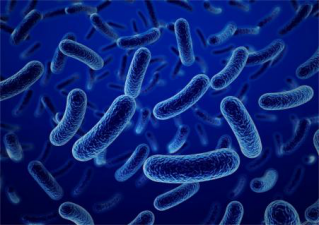1. Cattle and sheep. Cattle and sheep have a strong ability to digest crude fiber, and they can choose grain and feed as both materials and perennial grasses, especially high-stalk forage crops. Such as Mexican corn, Sudan grass, hybrid Pennisetum, Sorghum grass, alfalfa, ryegrass, pine cone herb, chicory, grain alfalfa, clover, sand, Wang, and so on. If dairy cows, dairy sheep and lambs are raised, in addition to the above-mentioned forages, tender and succulent, high sugar-rich, protein-rich forage crops such as sweet sorghum, Russian feed vegetables, and bitter leeks should be selected as much as possible.
2. Raising pigs. Pigs consume more concentrated fodder and the amount of green fodder should not be too high. The best choices are grain pods, bitter leeks, Russian forage dishes, Rumex K-1, and Ziyunying, as well as chicory and feed corn. String pine vanilla and so on. Such as raising sows, breeding boars should also be used with planting carrots, feed pumpkins.
3. Raise rabbits. Rabbits have a stronger ability to digest rough fibers in forage. Green roughage is the main feeding type, accounting for about 70% to 80% of the total diet. Optional species of bitter leeks, chicory, ryegrass, rye 70, winter grazing, alfalfa, hybrid pennisetum, Russian feed, Rumex K ~ 1 and other forages. In addition, sweet potato vines, carrots, kohlrabi, etc. are good feed for rabbits and can be comprehensively utilized.
4. Keep geese. Goose is a herbivore that is resistant to roughage. It requires only a small amount of concentrate to meet normal growth. Goslings should be selected for alfalfa, multi-flowered ryegrass, winter grazing 70 rye, hybrid pennisetum, clover, bitter buckwheat, grain alfalfa and other forage. In the arrangement of mouth rinsing, attention should be paid to the combination of length and length. Reasonable collocation of different kinds of forage should be carried out to achieve a balanced supply throughout the year.
5. Fish farming. Mainly grass-feeding fish, such as grass carp, carp, head maggots, etc., general herbivorous fish stocking should account for 60% of the total stocking. The fish should be selected from the forage varieties that are tender, juicy, nutrient-rich, cutlery-resistant, and high in yield, and whose herbage supply corresponds to the amount of herbivorous fish at the time, such as annual ryegrass, sudangrass, hybrid pennisetum, mexican corn, and Russia. Feed vegetables, bitter leeks, chicory, etc.
All water based products have plenty of nutrients and water to support microbe growth under favorable conditions. Microbes invade water based products from multi-point sources, such as contaminated raw materials, poor plant hygiene, untreated water, and not properly preserved recycling materials. While adding in-can preservatives into the products should not excuse a factory from Good Manufacturing Hygiene Practices (GMHP), proper use of in-can preservatives coupled with GMHP can dramatically minimize the chance of microbial tolerance development, and assure unspoiled products to customers.
Biocides formulators often use several types of in-can preservatives as active ingredients in their biocidal products for various industrial water based products. One of these active ingredients is benzisothiazolone (BIT). It has several distinct performance advantages, including good stability at high pH, good stability in the presence of reducing agents, and broad spectrum of activities against many microbes.Sunshine Biotech supplies to all industrial biocides formulators with high quality BIT technical ingredients. Besides of BIT, we also provide its derivative, like BBIT, MBIT etc.


Biocide Technical Ingredients
Biocide Technical Ingredients,Biocide Formula,Biocide Ingredients,Biocide Liquid
Nanjing Sunshine Biotech Co., Ltd , http://www.sunshine-bio.com